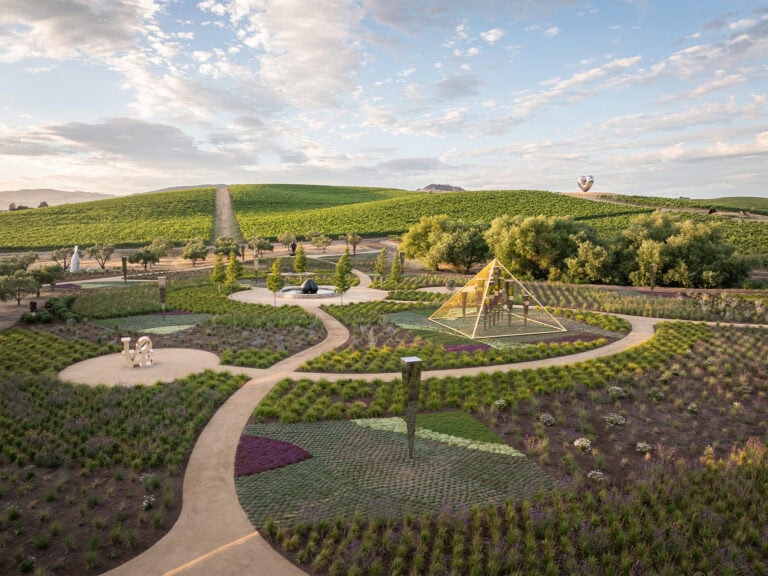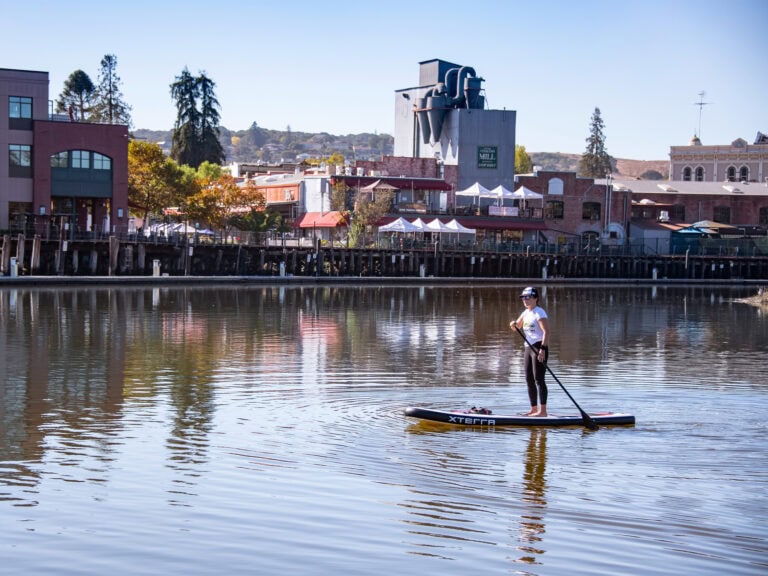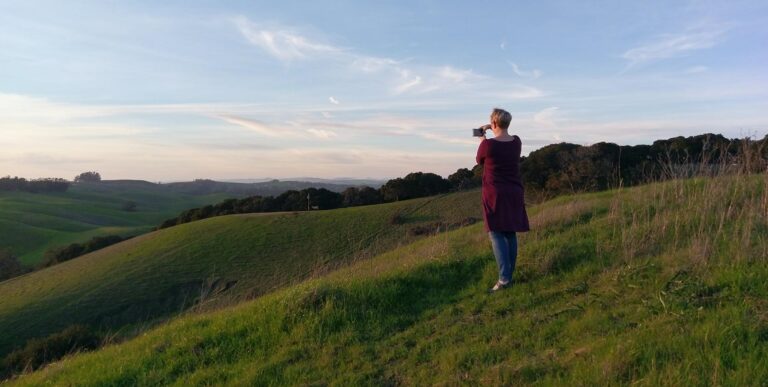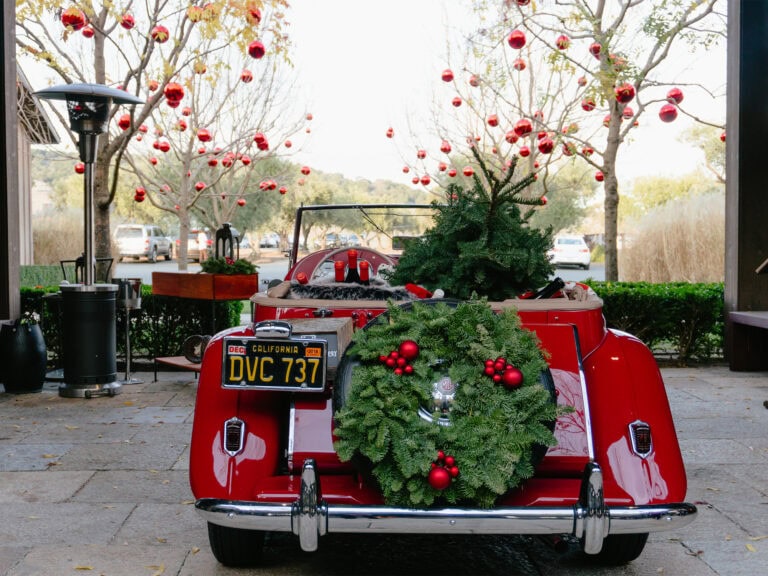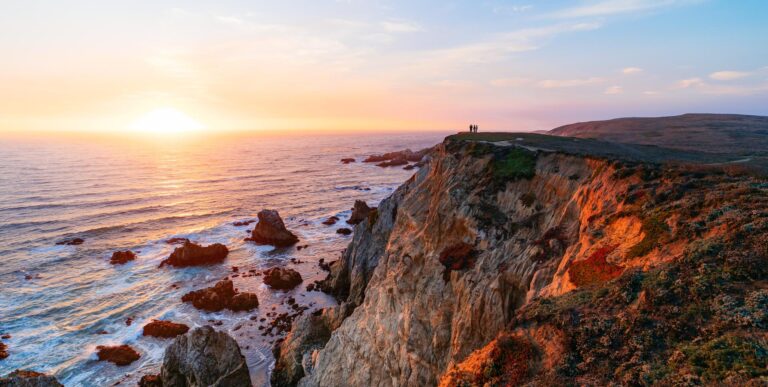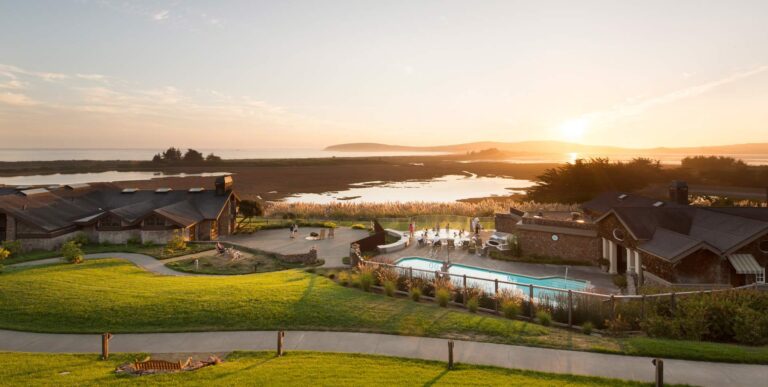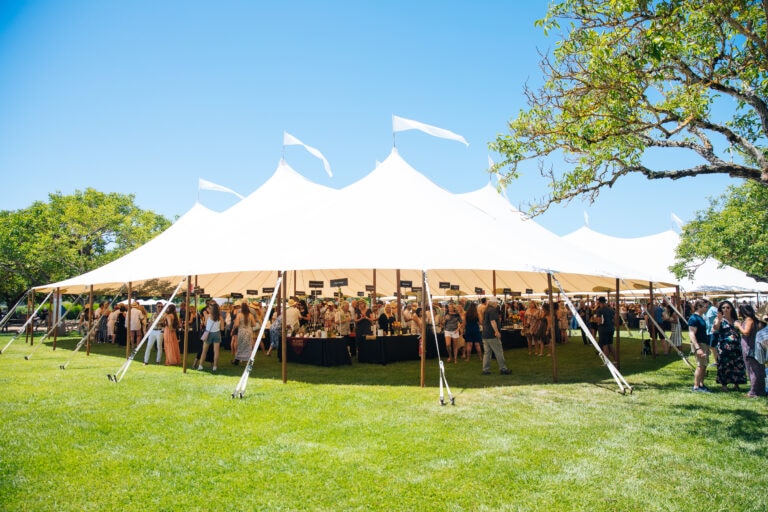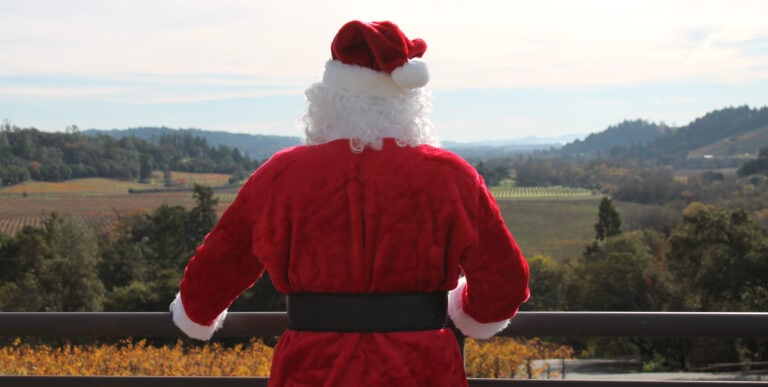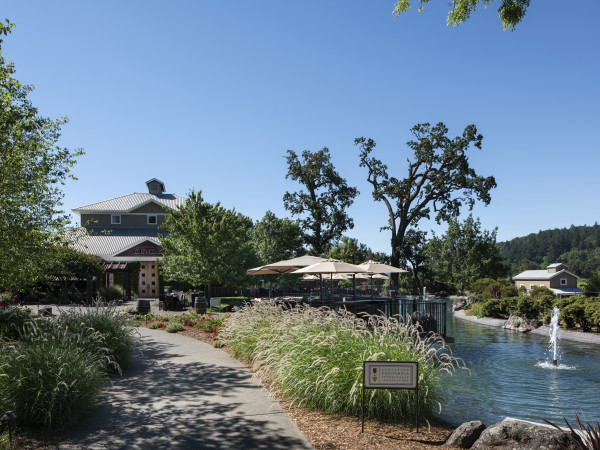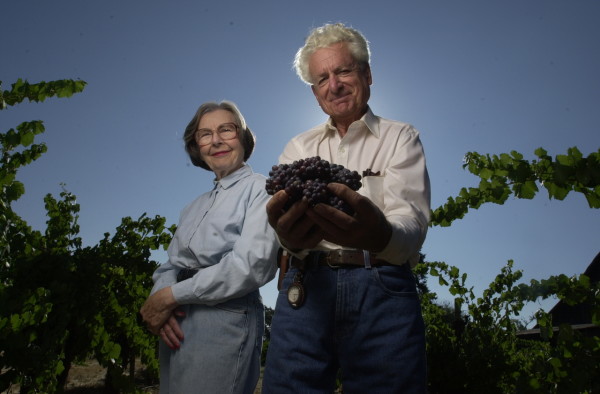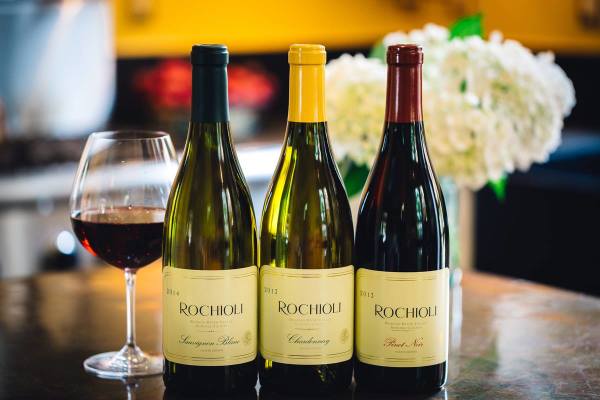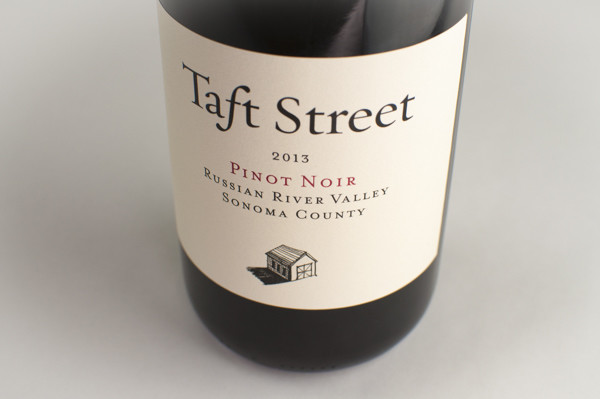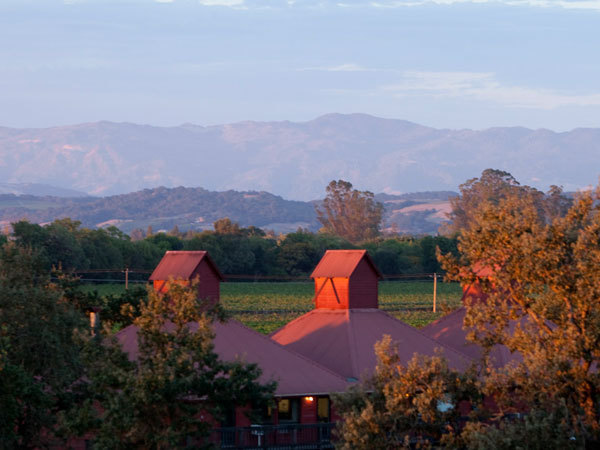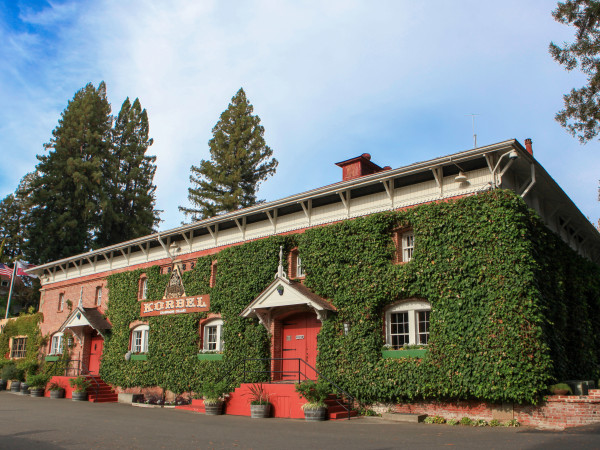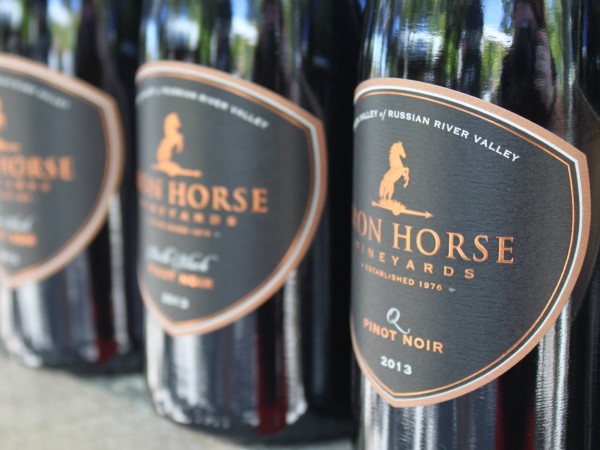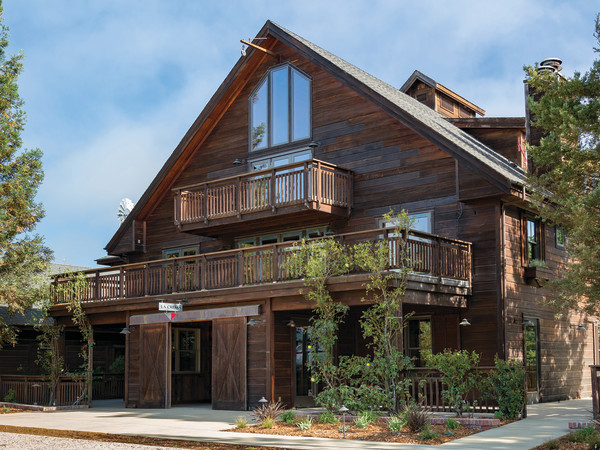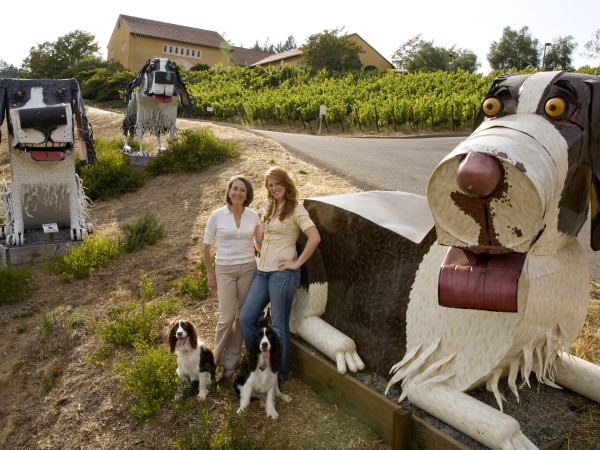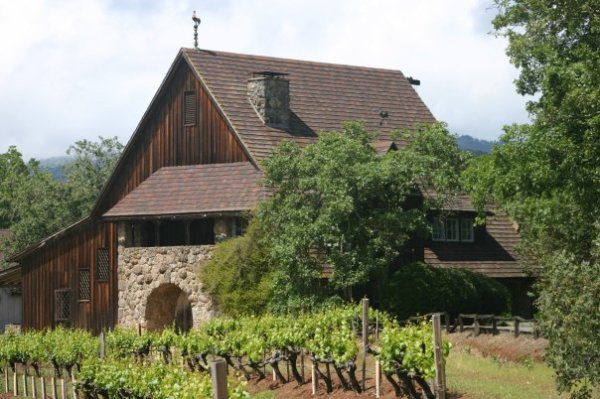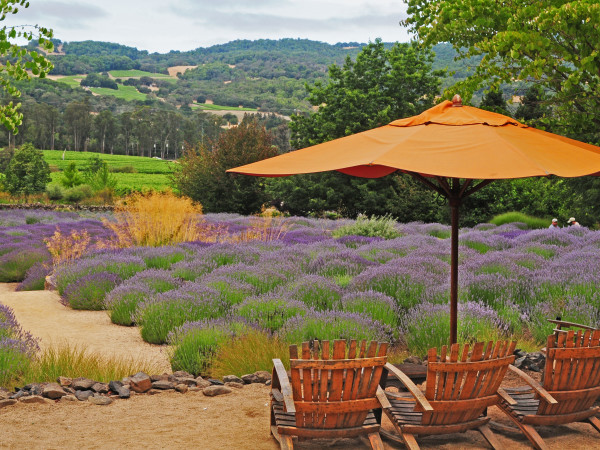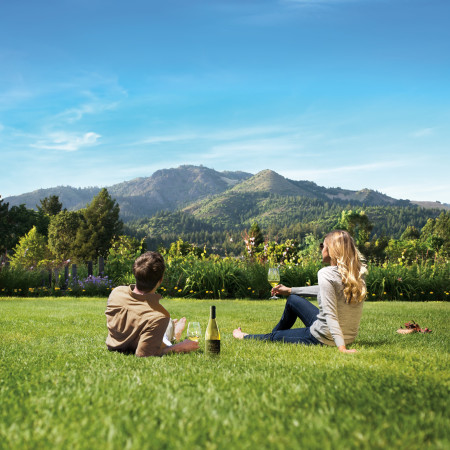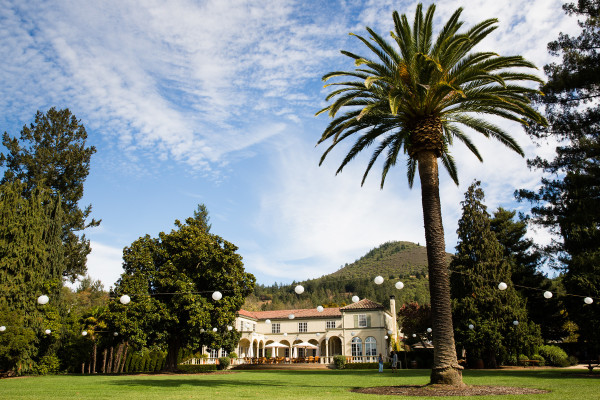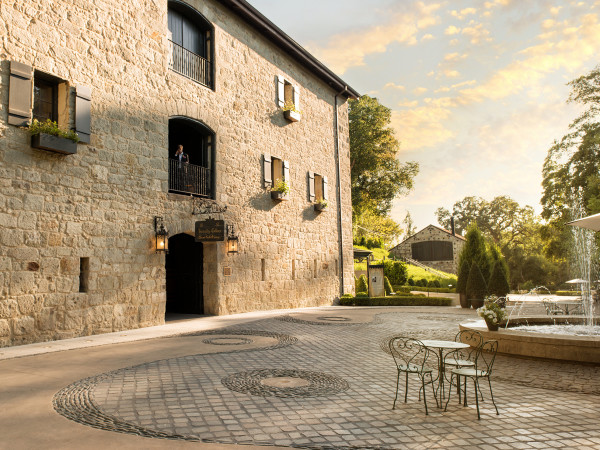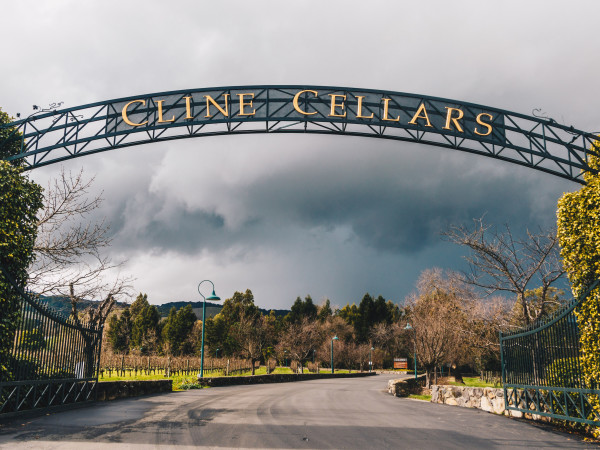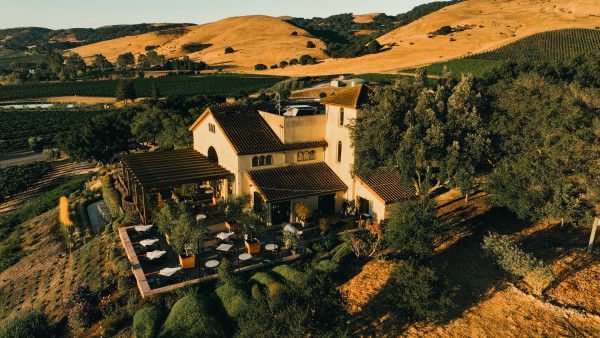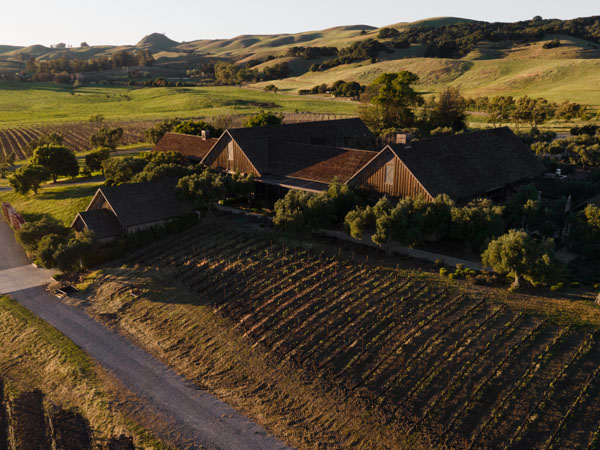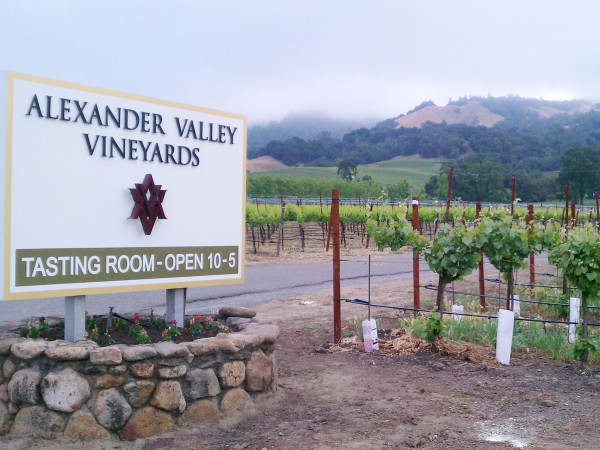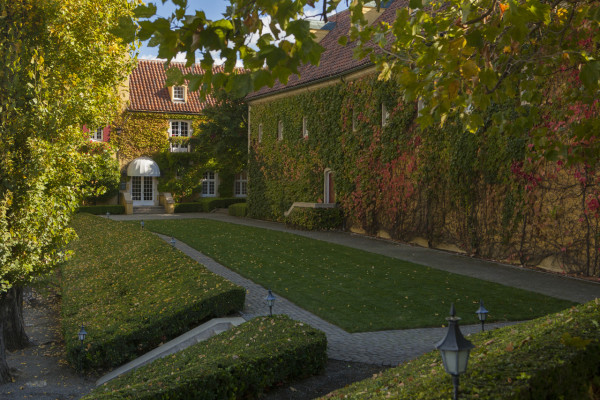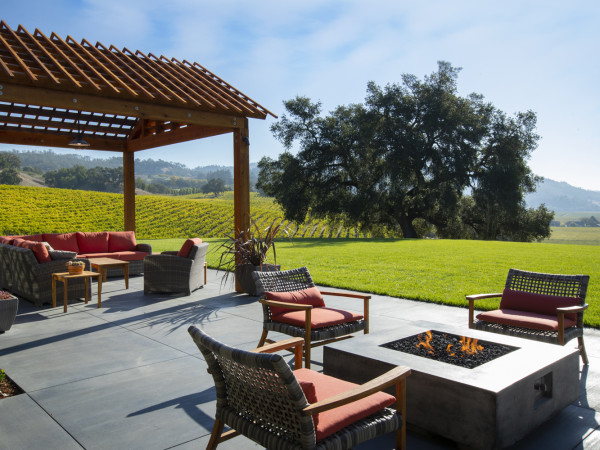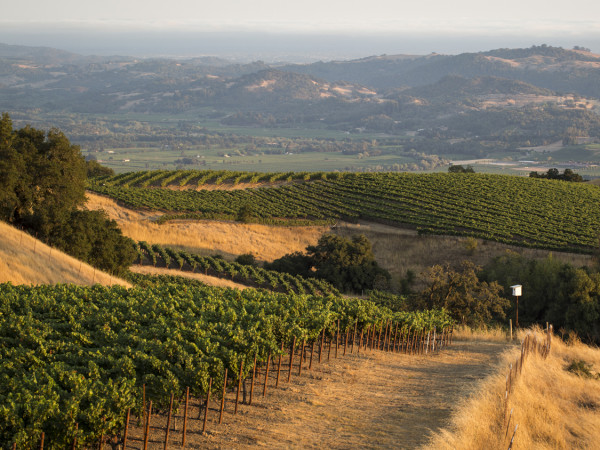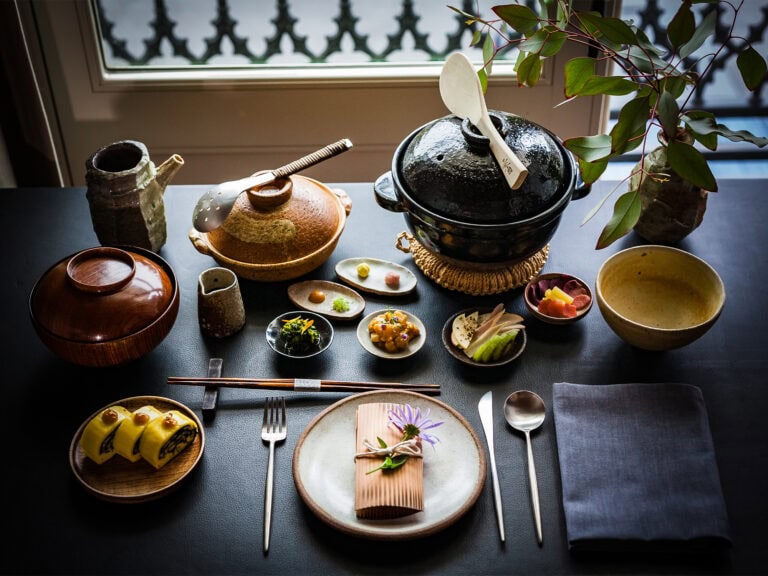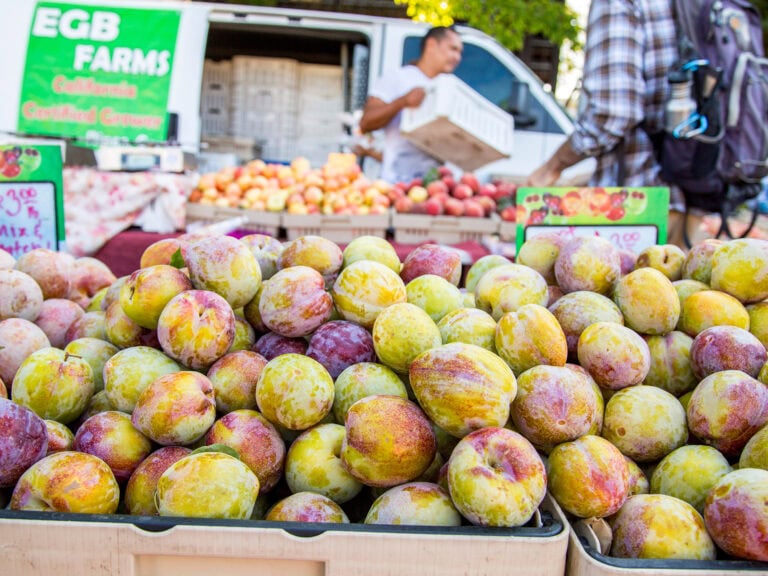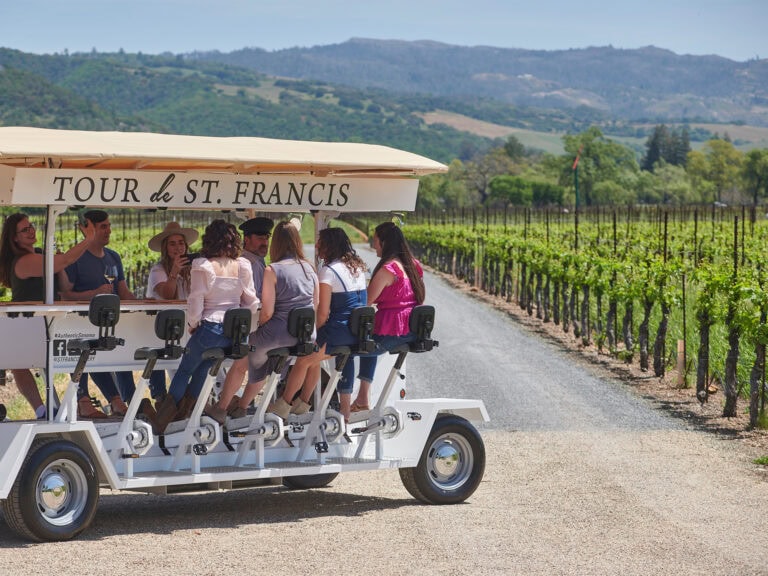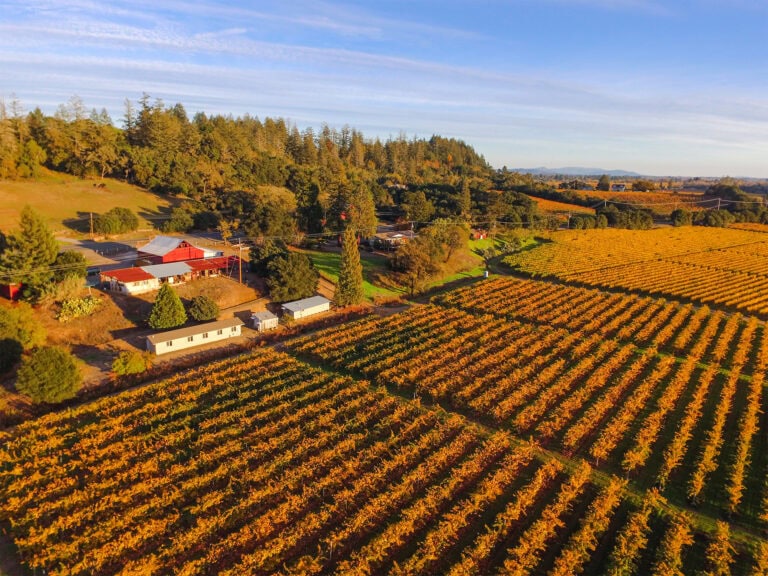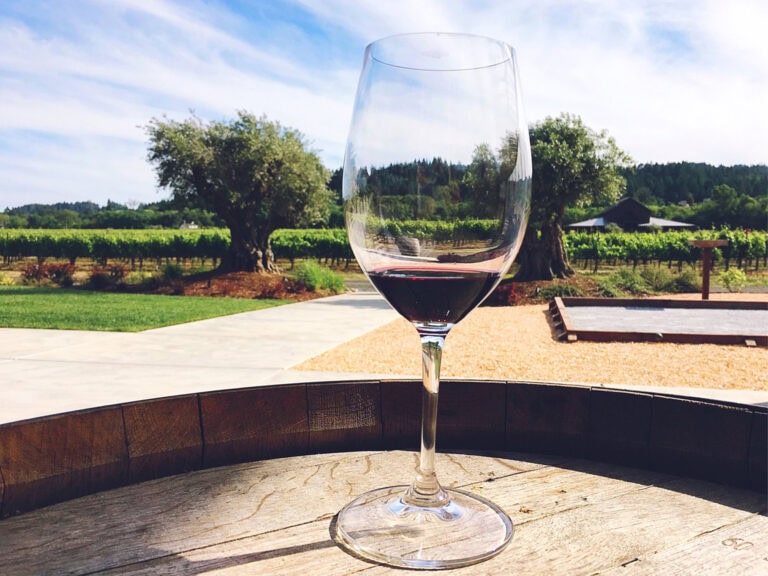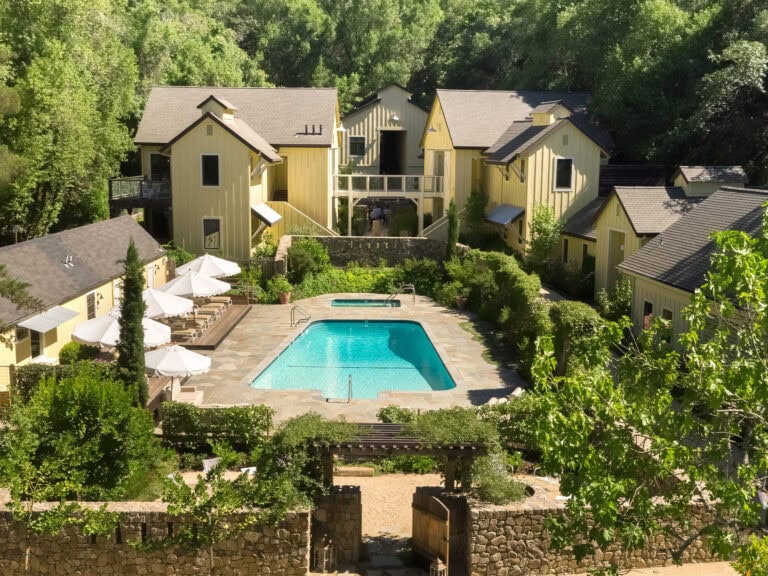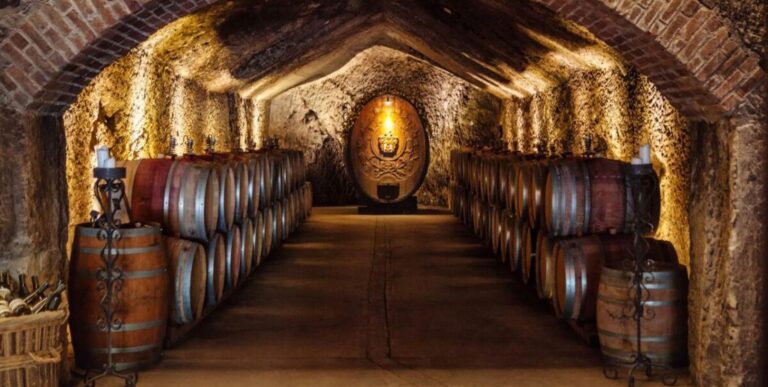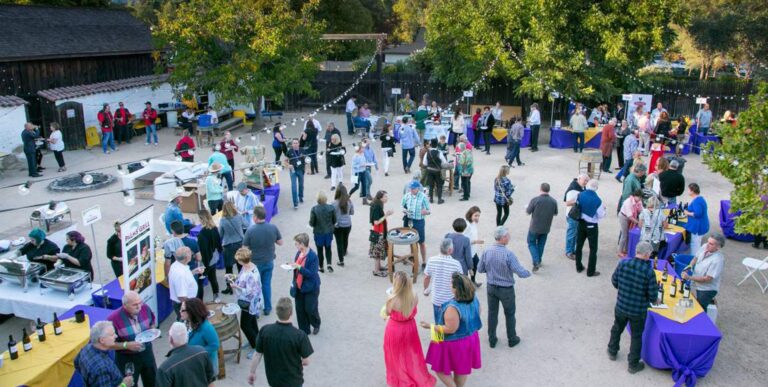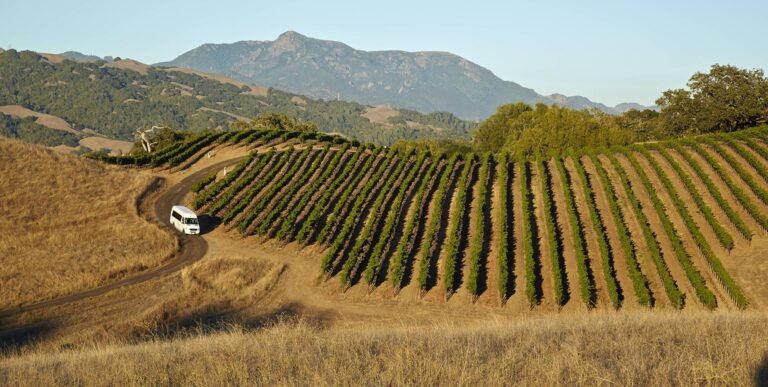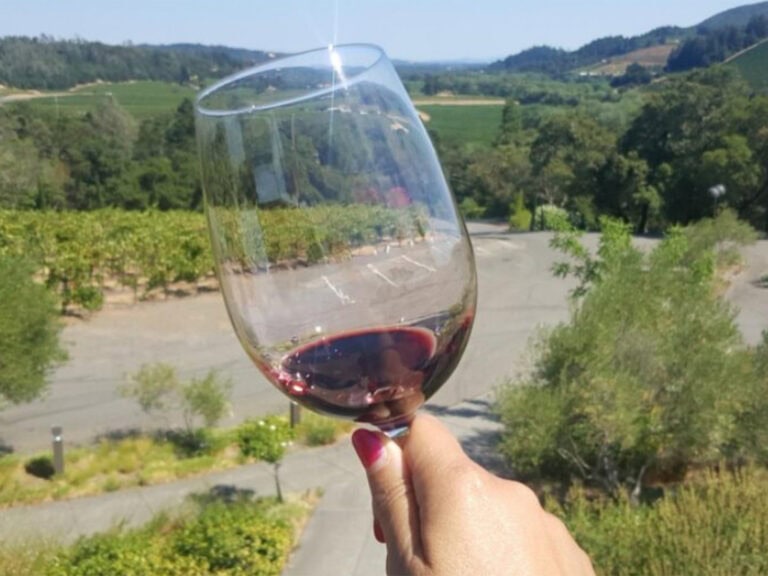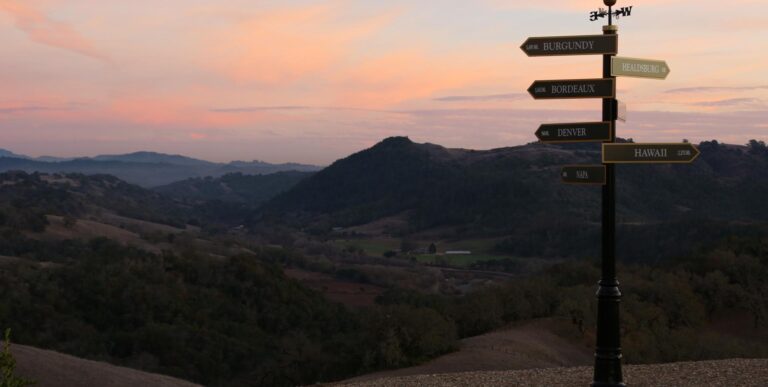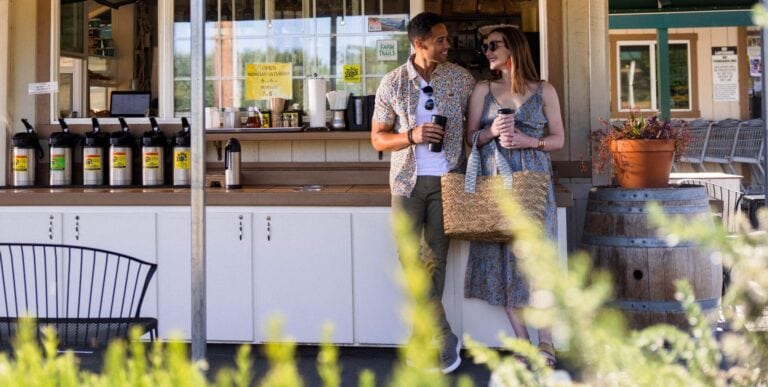The History of Chardonnay
Excellent Chardonnay is abundant in Sonoma County, where you’ll find some of the most coveted and expensive bottles as well as affordable, everyday wines produced in this ideal region.
Chardonnay Key Facts
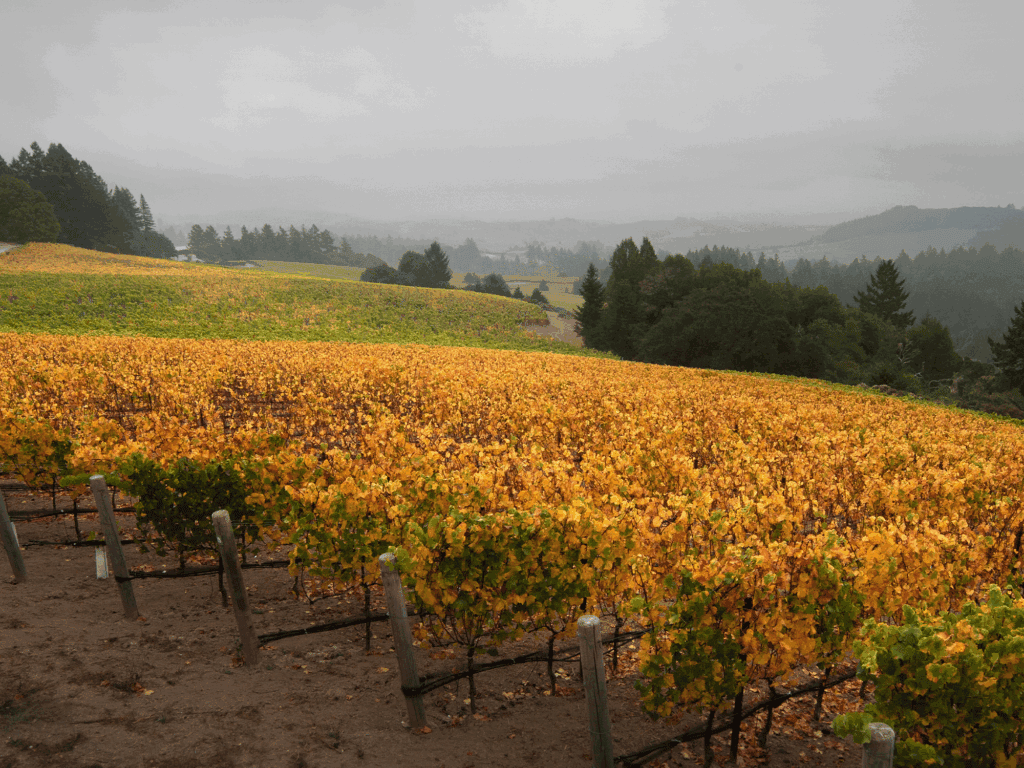
Chardonnay grape clusters are small to medium-sized with round berries that turn yellow, green, and brown by harvest. Some Chardonnay bunches are prized for producing a “hens and chicks” pattern of alternately large and tiny berries.
In its ancestral home in the Burgundy region of France, Chardonnay labels are traditionally identified not with this varietal but instead by the appellation name, such as Puligny-Montrachet and Meursault.
In the 1990s, Chardonnay was discovered to be the product of Pinot Noir and Gouais Blanc, a white grape from Roman times. Long ago, Chardonnay was also known by other names, like White Pinot or Pinot Chardonnay.
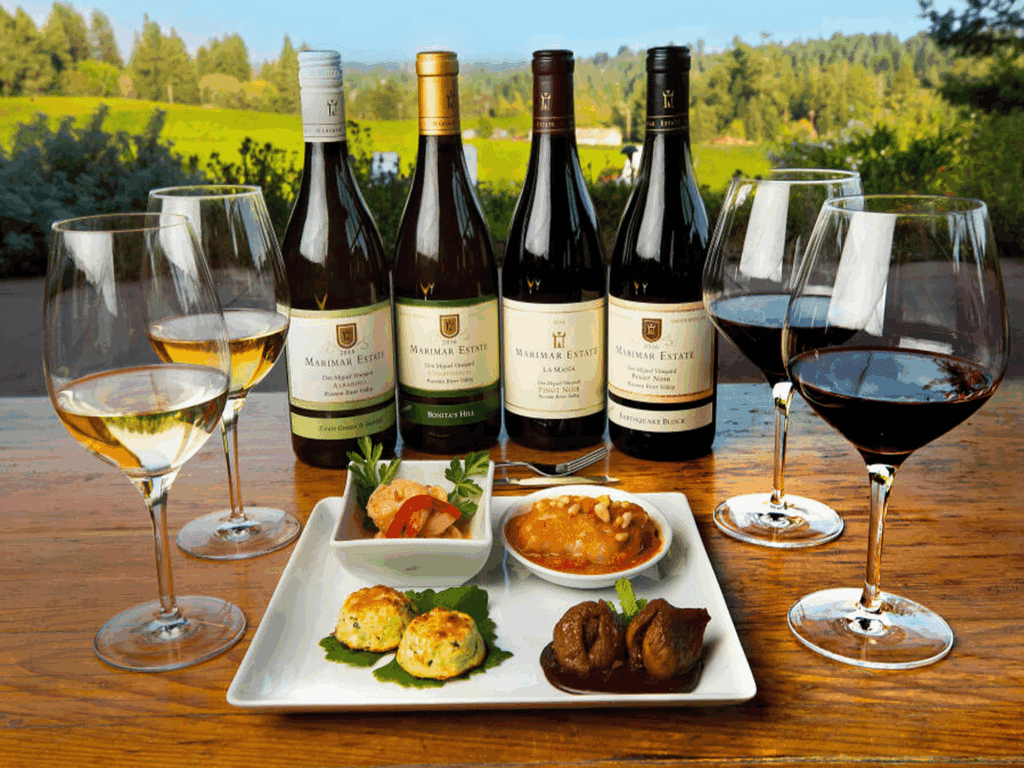
Chardonnay Style
Primary fruit aromas and flavors in Chardonnay run the gamut of citrus, apple, and sometimes mango or pineapple. Oak barrels lend to wine aromas ranging from campfire smoke to roasted almond or coconut.
The “buttery Chardonnay” profile is the product of winemaking techniques. Butter or cream characteristics come from malolactic (or ML) fermentation, in which malic acid (tart) is transformed into lactic acid (creamy). A buttery mouthfeel may also be shaped by batonnage, the French term for using a metal rod to stir the yeast slurry during fermentation.
“Un-oaked Chardonnay” is a style generally made in stainless steel tanks without ML to produce a crisp, refreshing, and slightly floral wine.
Chardonnay in Sonoma County

In the late 1880s, grapegrower John H. Drummond began to import some of the county’s first Chardonnay for his Kenwood vineyard, now part of the Kunde Family Winery.
In Sonoma Wine Country, the grape remained on the fringes until about 1976, when experts judged a local Chardonnay (Chateau Montelena 1973 Chardonnay) better than French bottles. The grapes from that prized Chardonnay came from Sonoma County’s Bacigalupi Vineyards.
As of 2021, Chardonnay was the top white wine grape planted in Sonoma County. Chardonnay is also important in the production of Sonoma County’s exceptional sparkling wine, which can display fruit flavors and produce vibrant brut and blanc de blanc bubbly.
Sonoma County’s Key Chardonnay Regions
Russian River Valley
Within this prime growing region, there is a cool, foggy pocket where Chardonnay retains higher acidity for excellent méthode champenoise sparkling wine.

Notable wineries for Chardonnay in Sonoma County’s Russian River Valley:
- Bacigalupi Vineyards, Healdsburg
- Ramey Wine Cellars, Healdsburg
- Rochioli Vineyards and Winery, Healdsburg
- Dutton-Goldfield Winery, Sebastopol
- Taft Street Winery, Sebastopol
- Iron Horse Vineyards, Sebastopol
- Martinelli Winery & Vineyards, Windsor
- Korbel Champagne Cellars, Guerneville
Sonoma Coast
Chardonnay grown in this cool, coastal zone often develops the acidity and structure needed to wear new French oak with grace.
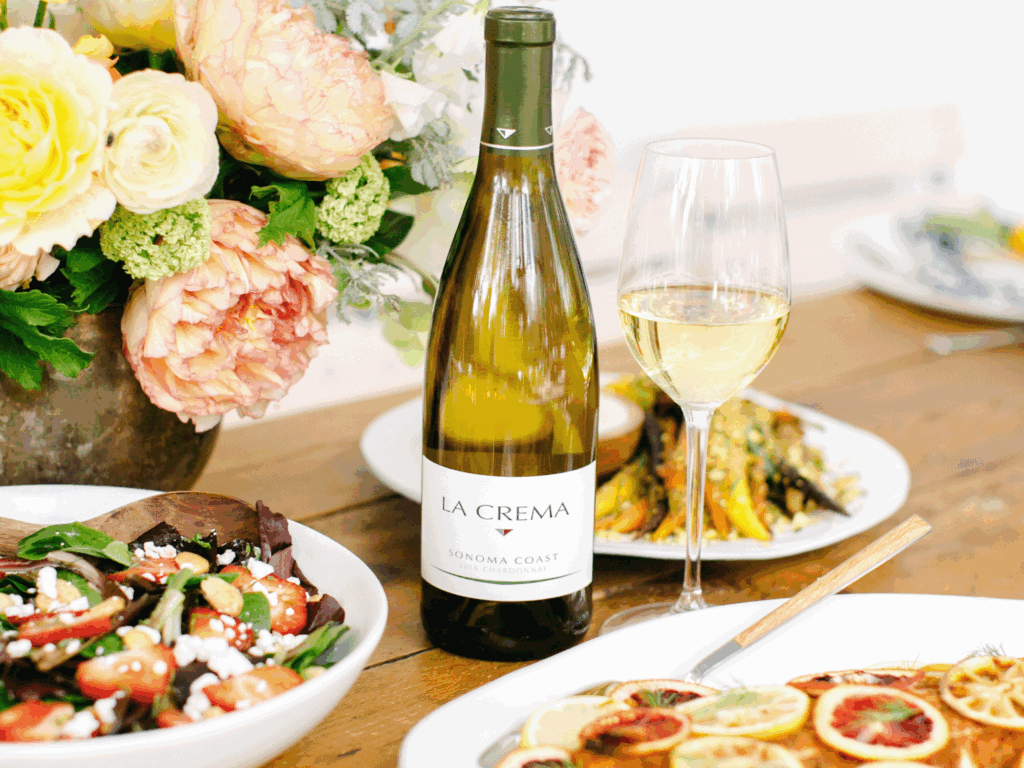
Notable wineries for Chardonnay in the Sonoma Coast Wine Region of Sonoma County:
- La Crema Estate at Saralee’s Vineyard, Windsor
- Marimar Estate, Sebastopol
- Fort Ross Vineyard, Winery & Tasting Room, Jenner
Sonoma Valley and Bennett Valley
These regions are the sites of several pioneering firsts in Chardonnay, including temperature-controlled fermentation, the use of small oak barrels, and the famous buttery-style results.

Notable wineries for Chardonnay in Sonoma County’s Bennett Valley and Sonoma Valley Wine Regions:
- Matanzas Creek Winery, Santa Rosa
- Landmark Vineyards, Kenwood
- Chateau St. Jean, Kenwood
- Kunde Family Winery, Kenwood
- Buena Vista Winery, Sonoma
- Hanzell Vineyards, Sonoma
Carneros
Here, the temperatures are influenced by breezes from San Pablo Bay, making for a cool, yet stable growing season ideal for Chardonnay and sparkling wine.
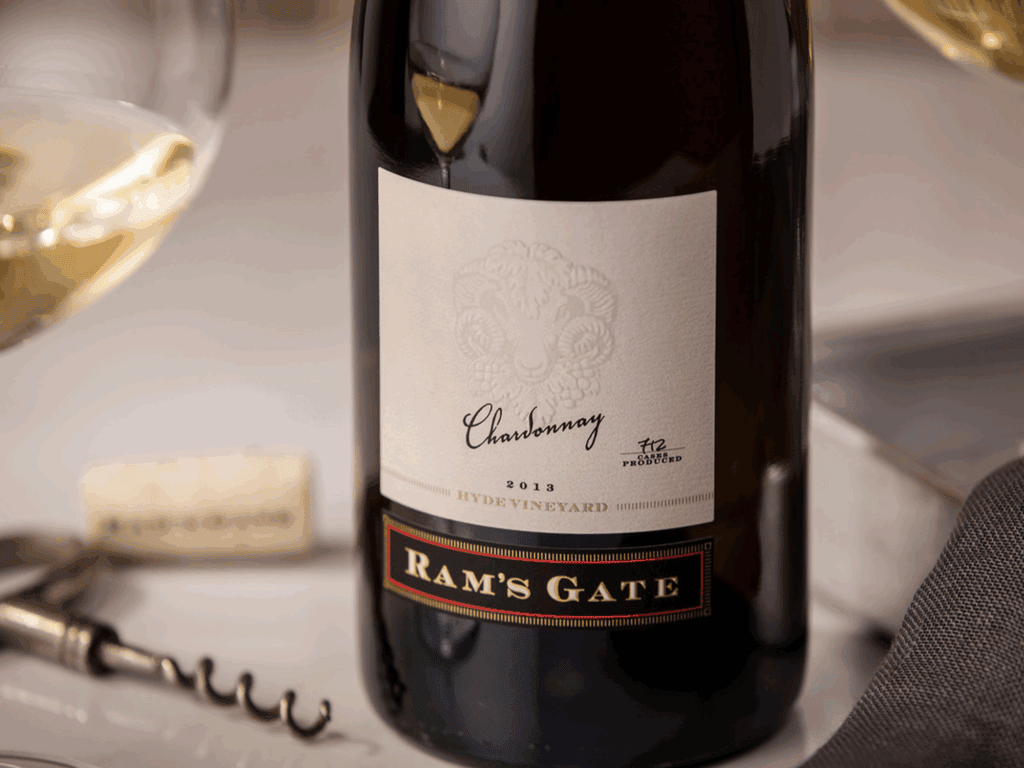
Notable wineries for Chardonnay in Sonoma County’s Carneros Wine Region:
- Anaba Wines, Sonoma
- Ceja Vineyards, Sonoma
- Cline Family Cellars, Sonoma
- Gloria Ferrer Caves & Vineyards, Sonoma
- Ram’s Gate Winery, Sonoma
Alexander Valley and Knights Valley
In Sonoma County’s warmest growing regions, excellent Chardonnay is created.

Notable wineries for Chardonnay in the Sonoma County Wine Regions of Alexander Valley and Knights Valley:
- Alexander Valley Vineyards, Healdsburg
- Jordan Vineyard & Winery, Healdsburg
- Rodney Strong Vineyards, Healdsburg
- Stonestreet Estate Vineyards, Healdsburg
- Stuhlmuller Vineyards, Healdsburg
- Robert Young Estate Winery, Geyserville
Written by Sonoma Insider James Knight
Places Mentioned
THIS IS WINE COUNTRY.
Share your experience using #SonomaCounty or #LifeOpensUp
